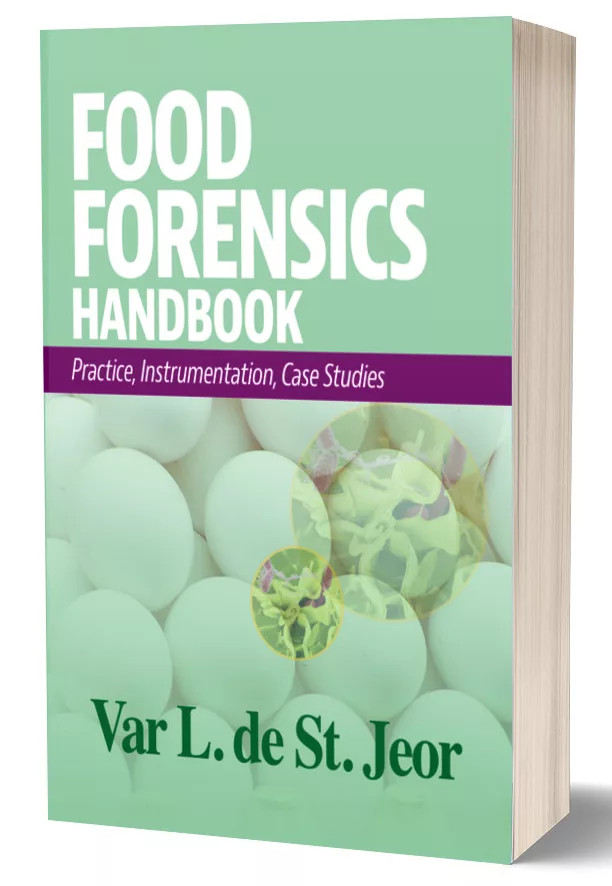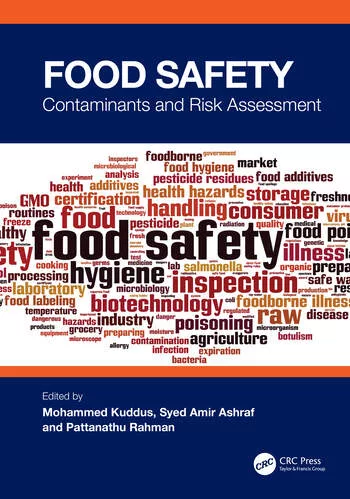Don’t Forget about Your Chemical Hazards!

The Food Safety Modernization Act (FSMA) was signed into law on January 4, 2011. Simply stated, it enables the U.S. Food and Drug Administration (FDA) to better protect public health by focusing on preventing food safety problems rather than reacting to issues after they occur.
In January 2013, FDA published the proposed rule on preventive controls for human food: Current Good Manufacturing Practice and Hazard Analysis and Risk-Based Preventive Controls for Human Food. This rule requires food companies to develop a written food safety plan that includes a Hazard Analysis and risk-based preventive controls for known or reasonably foreseeable hazards that could affect food manufactured, processed, packed or held at a facility. This plan will be required to include several elements, most notably:
• Hazard Analysis (including all potential biological, chemical, radiological and physical hazards that are reasonably likely to occur)
• Preventive controls
• Monitoring procedures
• Establishing corrective action procedures
• Validation and verification of effectiveness of the entire food safety system, not just the critical limits that support Critical Control Points
• Record keeping of the above activities
The proposed Hazard Analysis and risk-based preventive control requirements approximate the framework of Hazard Analysis and Critical Control Points (HACCP) systems. As shown in Figure 1, there are six basic principles.
It has been our experience that many HACCP programs focused on microbial and, to a lesser extent, physical hazards. Chemical hazards were relegated to identifying sanitizing agents, mechanical grease, machinery lubricants and facility pest control products. However, FSMA specifically identifies and calls out pesticides, drug residues and unapproved food and color additives as reasonably foreseeable hazards to consider. Alas, the often-forgotten chemical contaminants cannot now be ignored. Chemical contaminants can cause serious damage to your customers’ health and have a major effect on your business. In 2008, melamine-contaminated infant formula sickened hundreds of infants and caused several deaths in China. While this type of economically motivated contamination is rare, contamination of food products with, for instance, an unregistered pesticide is more common and will trigger a Class II recall.
The best approach to protect your product from chemical contamination is to identify the hazards in your ingredients before they can affect your final product. Since it is not realistic to test every lot of ingredient for every chemical contaminant, it is best to develop a testing program for your most risky ingredients. The initial challenge with this approach is identifying your high-risk ingredients! We use a risk analysis based on Codex Alimentarius to identify and weigh risk for all incoming ingredients. Our risk analysis follows a structured approach comprising three distinct but closely linked components of risk analysis: risk assessment, risk management and risk communication (see Figure 2).

Risk Assessment
Risk assessment relates to understanding and attempting to quantify how big the risk is and the main factors that influence the risk. A comprehensive chemical risk assessment of ingredients includes evaluating many factors such as inherent risk, incidence and supplier histories, target markets, percent of the ingredient in the final formulation, etc. The most thorough risk assessments also include an in depth, on-site evaluation of selected processing facilities to further assess risks.
Risk Management
Once the risks are satisfactorily identified, risk management can then be employed. This element identifies and prioritizes the options or scenarios a company should consider to mitigate and manage the risks. Supplier contracts, certificates of analyses (COAs), analytical testing to verify COAs and supplier audits are key components to manage the chemical risk of incoming ingredients.
Risk Communication
Risk communication is utilized throughout the risk analysis process to promote awareness and understanding of the specific issues under consideration during the analysis. While often taken for granted, communication is critical for consistency and transparency in formulating risk management options, recommendations and directions a company should speak about in regards to the risks and how such risks may impact those options and directions. For example, communication between purchasing and the quality assurance teams is critical for a successful program. The two teams can easily have conflicting goals that need to be brought into consensus.
A Phased Approach and Scope
Companies approach risk analysis initiatives in a number of ways. Based on our experience, we have identified best-in-class commonalities, elements and phases that should be considered in producing a chemical risk analysis that achieves compliance with FSMA and company-specific needs.
When tackling a complex project, a wise person once commented, “The only way to eat an elephant is one bite at a time!” With this quote in mind, we employ a phased approach to risk analysis using a robust and flexible means of achieving the initiative’s objectives. As depicted in Figure 3, we typically align two of the main key elements—risk assessment and risk management—across three phases, with risk communication spanning the entire project.
Phase 1: Document Review
The document review must be comprehensive enough to uncover all chemical hazards for the ingredient. At this point, mitigation of the hazards is not attempted. Instead, the assessment is made simply to identify the hazard, determine its likelihood to occur and the severity if the hazard does occur.
To accomplish this daunting task, we recommend partnering with the organization’s food safety team to conduct a deep-dive assessment of numerous documents, including:
• Ingredient specification
• Supplier information and history
• Supplier audits
• Formula review
• Marketing information
• Agricultural reviews
• Purchasing information
Phase 2: Hazard Classification Ranking
Information gleaned from the above assessment forms the starting point for data that eventually serve as inputs into the risk assessment model. A ranking system is used to build the model and segment ingredients that are more or less prone to potential risks, thus providing management with indications of where to focus actions. The overall ingredient determination and classification can involve multiple factors, as summarized in Table 1.

Data and observations from the above can be summarized in a number of ways. An effective approach is to assign a numerical value to each factor with a definition for each number. An overall risk classification value is calculated using the assessment and aggregation of results from each factor. The model is flexible enough that additional factors can be added and, where appropriate, factors can be weighted for increased value in the model calculations. Figure 4 illustrates the calculation.

The overall risk classification values can then be summarized as “High,” “Medium” and “Low” with definitions for each (see Table 2 for example definitions). While based on fictitious data, Figure 5 is an example of a risk assessment report used to summarize the data in a user-friendly format.


Phase 3: Mitigation Controls
Once the risk has been identified, it must be mitigated. This can be accomplished by establishing preventive controls. Typical preventive controls that can be used to mitigate chemical risks in ingredients are:
• Supplier verification programs
• Supplier contracts
• COA requirements
• Verification/testing programs
• Audits
• An ingredient tool kit for product development
You can see an example of outputs from phase 3 in Figure 6.

Testing Programs
If you use a testing program as a preventive control, it needs to be evaluated routinely to remain comprehensive and up to date. Over the past several years, there have been many changes and advancements relating to testing programs.
One of the most relevant changes came in 2002, when a new method for pesticide residue testing was presented at the European Pesticide Residue Workshop in Rome. Developed by scientists at the U.S. Department of Agriculture, this “quick, easy, cheap, effective, rugged and safe” method, known by the acronym QuEChERS, greatly simplified the analysis of pesticide residues in fruits, vegetables and other food products. QuEChERS uses fewer and less-expensive solvents, employs a faster extraction method and takes advantage of “newer technology” such as liquid chromatography-tandem mass spectrometry (LC/MS/MS). LC/MS/MS provides analytical specificity superior to other conventional methods and allows better detection and improved quantitation limits.
In 2004, FDA’s Office of Regulatory Affairs Science Peer Review findings indicated FDA’s pesticide program was not taking advantage of the latest science and technology. At the time, FDA laboratories were using methods published in the Pesticide Analytical Manual (PAM), which included gas chromatography/MS (GC/MS), high-performance LC with fluorescence and other GC-based methods. However, many pesticide compounds are not detected by the screening methods outlined in PAM because they are thermolabile, less volatile and/or too polar, and had to be analyzed individually using single-residue methods.
An LC method interfaced with a more selective detection system was needed to detect these additional pesticide residues within a screen. Major international testing programs (including those of Germany, the Netherlands and Switzerland) were using the QuEChERS approach for residue testing and using LC/MS/MS to detect pesticide residues.
In 2007, the FDA Pesticide Steering Committee recommended that to effectively monitor pesticides and other food contaminants and to modernize the FDA field labs, agency labs needed to start using LC/MS/MS methods. In 2008, FDA started installing and using LC/MS/MS (in addition to the existing methods) in its screening programs, thereby increasing the scope of FDA residue testing.
At The National Food Lab, we parallel our testing protocols to those of FDA. Our goal is to match our compound list to FDA’s compound list. Thus, as FDA is continually expanding its list of residues, we also expand our list to keep current and ensure that evaluations meet regulatory scrutiny.
Focused and Forward-Looking Prevention
As FSMA requirements continue to evolve, food companies will need to consider or reassess their approaches to risk assessments to ensure that complete and compliant systems exist for microbial, physical and chemical hazards. The approach described in this article offers a systematic process for identifying, prioritizing and testing the often-neglected chemical hazards. Risk analysis tools such as those summarized above are rugged enough to uncover and rank your chemical hazards, and flexible enough to easily add newly identified risk factors and threats.


Looking for quick answers on food safety topics?
Try Ask FSM, our new smart AI search tool.
Ask FSM →








